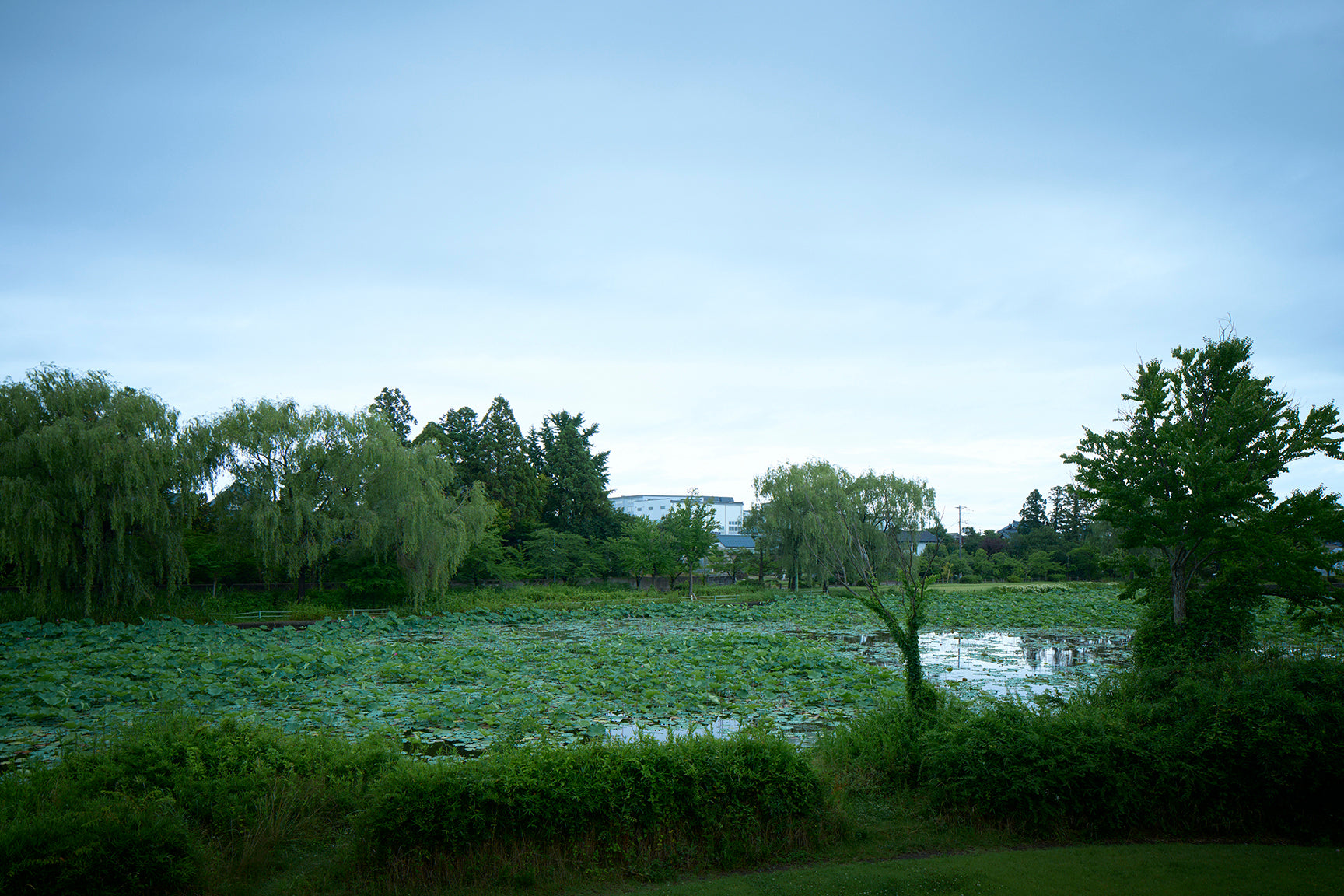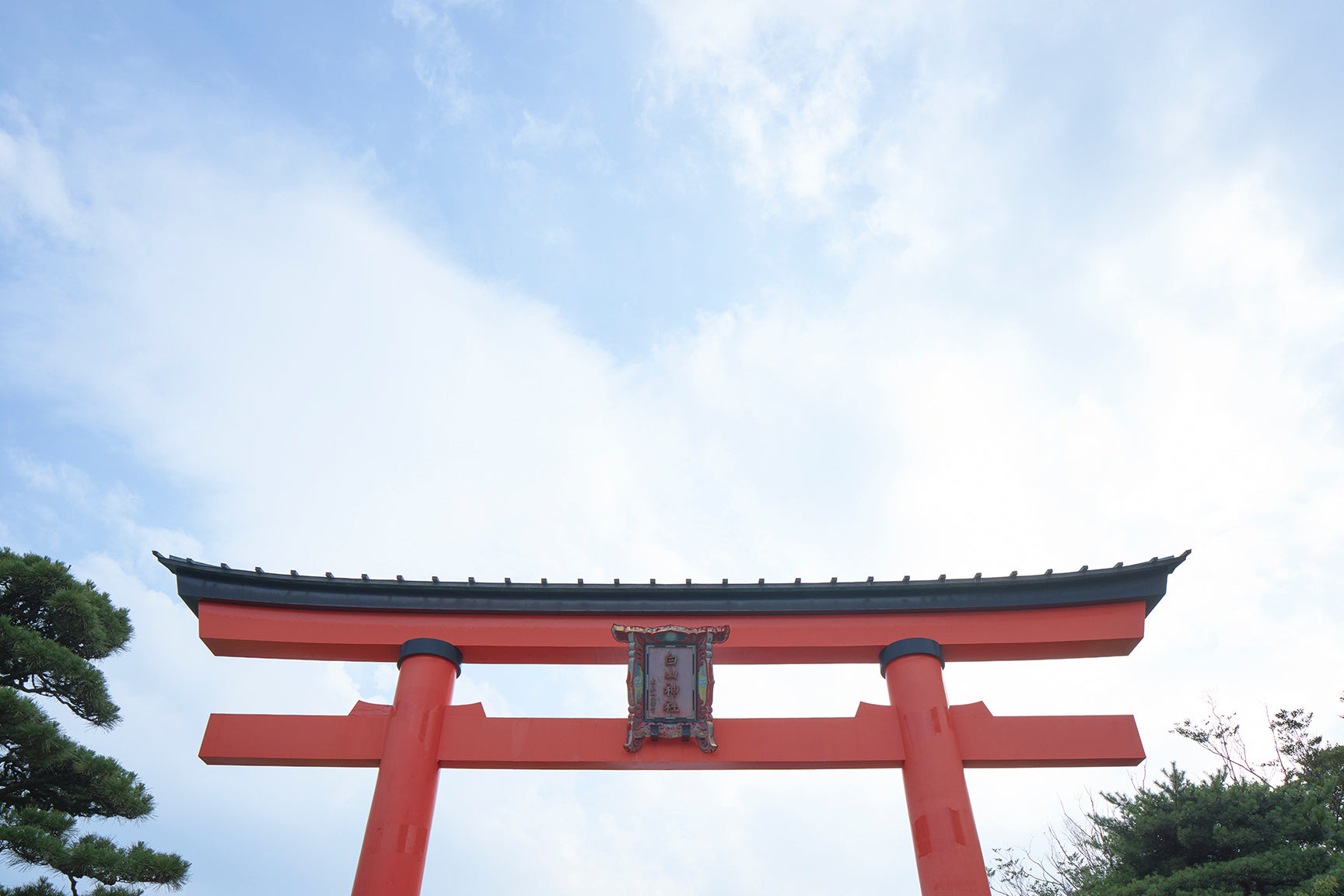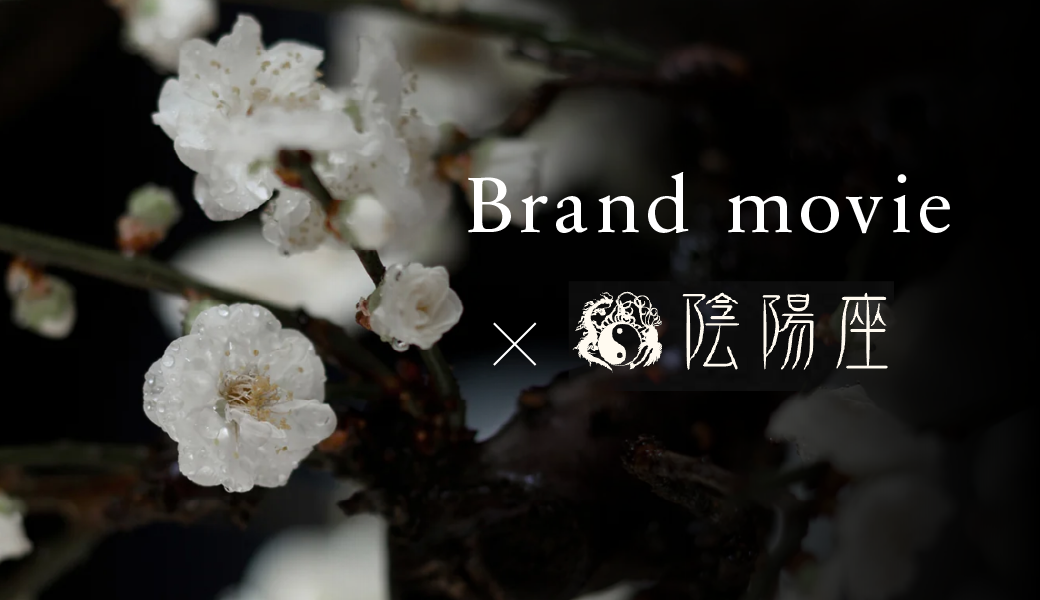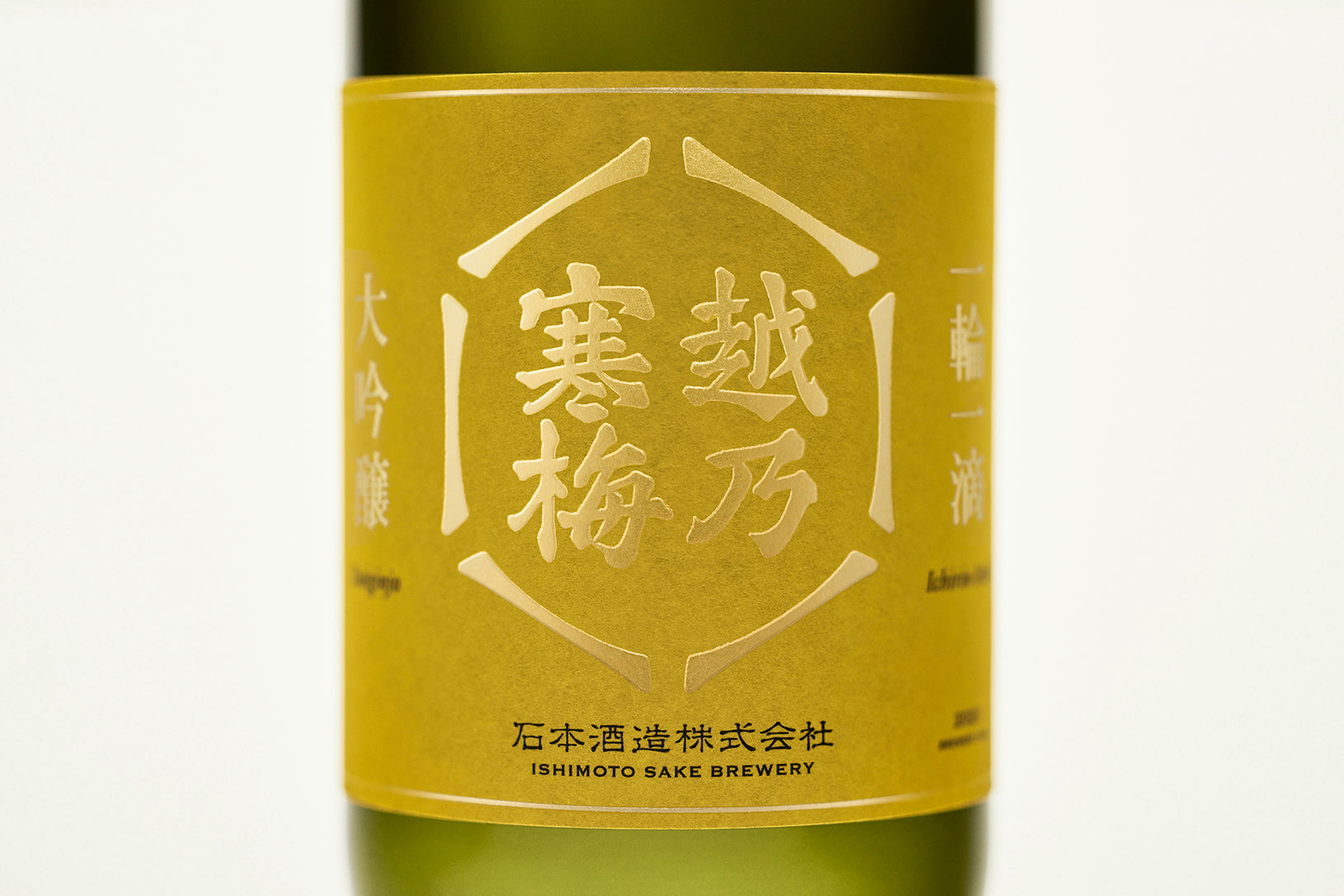
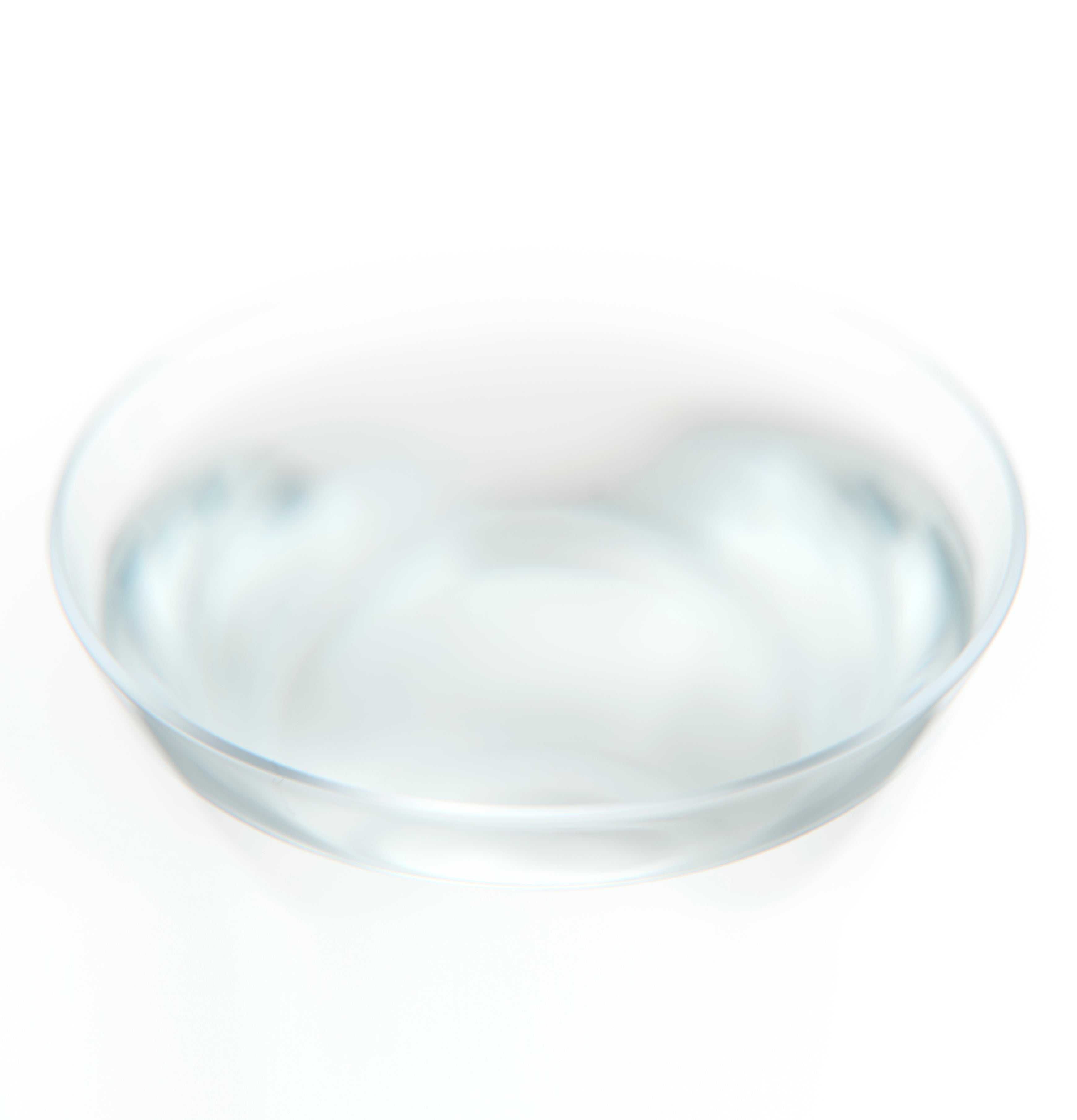
About
The origin of the Koshi no Kanbai name
The single kanbai winter plum that braves the bitter cold and blossoms boldly.
Kameda-go stands almost in the center of Niigata City.
This sandy area between the Agano, Shinano, and Koagano rivers is Koshi no Kanbai's home.
It has been famous for ume, Japanese plum, since the Edo Period some 400 years ago. Orchards of Togoro ume, which bear large fruit in summer, are covered in delicate blossoms amid the lingering snows of early spring.
The kanbai plum blossoms that brave the bitter cold are what give Koshi no Kanbai its name.
Kameda-go is also blessed with abundant clean water from the Echigo mountain range and a cold winter climate ideal for good sake production, making it ideally suited for brewing.

Ishimoto Sake Brewery's Journey

Founding Kuramoto (Brewery President)
Ryuzo Ishimoto
1907
"Making sake for local people in the farming industry to enjoy."

Founding Kuramoto (Brewery President)
Ryuzo Ishimoto
1907
Ishimoto Sake Brewery was founded in 1907.
Despite abundant water, the region actually has a dry climate that makes farming a struggle. The brewery was born from a desire to make sake that could provide relief to farmers working hard in difficult conditions and energize them for the next day.
Founding kuramoto (or brewery president) Ryuzo Ishimoto wanted to offer sake that would complement everyday meals and enhance both the flavor of the food and the spirits of the drinker. That is what has guided Koshi no Kanbai's flavor, which can be summed up as "clean but powerful, with easy drinkability."
At the time, there were no local resources offering technical guidance and quality brewing technology was still scarce. However, Ryuzo was quite particular about obtaining good sake rice, not only in terms of the variety but the growing region, as well.
His search brought him to Kame-no-O rice grown in the village of Kajikawa in Niigata's Katakanbara district (present-day Shibata City). Since then, we have brewed only sake that we can taste for ourselves and deem “delicious.”

2nd Generation Kuramoto
Seigo Ishimoto
1933
"Focus on water and pursue a clean flavor above all."

S2nd Generation Kuramoto
Seigo Ishimoto
1933
Then came the period of rebuilding and economic growth after World War II. As the market focused on rich, sweet sake, Koshi no Kanbai refused to alter its clean flavor profile.
Second-generation kuramoto Seigo Ishimoto inherited his father's dedication to carefully selecting rice and creating sake to help farmers in their work, while making it his own goal to seek out water that would create a lighter flavor.
Out of his belief that water is the key to good sake, he dug well after well around the brewery, over a hundred in all.
Eventually he discovered an underground spring with soft water in the garden of his own house. At the time, sake brewing was focused on hard water like the Miyamizu of Nada in Hyogo Prefecture. While soft water brought a gentle delicacy to sake, it also made for weaker fermentation and increased the risk of failure.
Seigo, however, did not let that deter him, and insisted on using soft water with more highly polished rice in a slow, low temperature fermentation. He succeeded in making clean, light sake that was still powerful and drinkable: the essence of Koshi no Kanbai flavor.

3rd Generation Kuramoto
Ryuichi Ishimoto
1982
"Commit to rice's natural flavor and make sake to be drunk with an easy mind."

3rd Generation Kuramoto
Ryuichi Ishimoto
1982
With the end of Japan's rapid economic growth, society began to see value in authenticity, and tastes in sake shifted from sweet to dry.
The nation saw a boom in jizake—locally made sake from the outlying regions—leading to even small craft breweries ramping up production and profits. Koshi no Kanbai, though, refused to compromise on our way of making sake or shift to mass production.
Third-generation kuramoto Ryuichi Ishimoto chose to offer sake that brought out the rice’s natural flavor and was full, smooth, and gentle. To that end, he increased the number of maturation tanks to allow for low-temperature storage for six months to two years, in order to fully bring out the characteristics of the aged sake.
He also boosted hygiene and quality control to ensure an environment for safe and secure sake brewing.

4th Generation Kuramoto
Tatsunori Ishimoto
2003
"Consider the customer's joy and our contribution to the community, and give them shape."

4th Generation Kuramoto
Tatsunori Ishimoto
2003
Fourth-generation kuramoto Tatsunori Ishimoto carries on the tradition of creating the ideal sake through the techniques and spirit that have persisted since the founding of the brewery.
Even as we continue to improve the quality of products already on the market, we will strive to share the wonders of sake with people of all ages, even as the sake world undergoes significant change.
We will also transcend the boundaries of sake brewing and give shape to the unwavering ideals of our founder by dedicating ourselves to delighting customers and contributing to the community.
The new base facility, currently in the planning stage, will help us with that mission. We want to create a virtuous cycle by sharing the blessings of Niigata with Japan and the world, then returning the rewards to our local community.
We hope you will join Ishimoto Sake Brewery on our journey as we embark on new challenges and continue our study of sake brewing.
Journal
What drives Ishimoto's
sake brewing?
And what is it that we hope to
bring to the future of the world
and sake through our brewing?
"Believe in sake,
believe in the world."
That is the concept that unites
the ongoing initiatives and
new ideas we are now pursuing.
